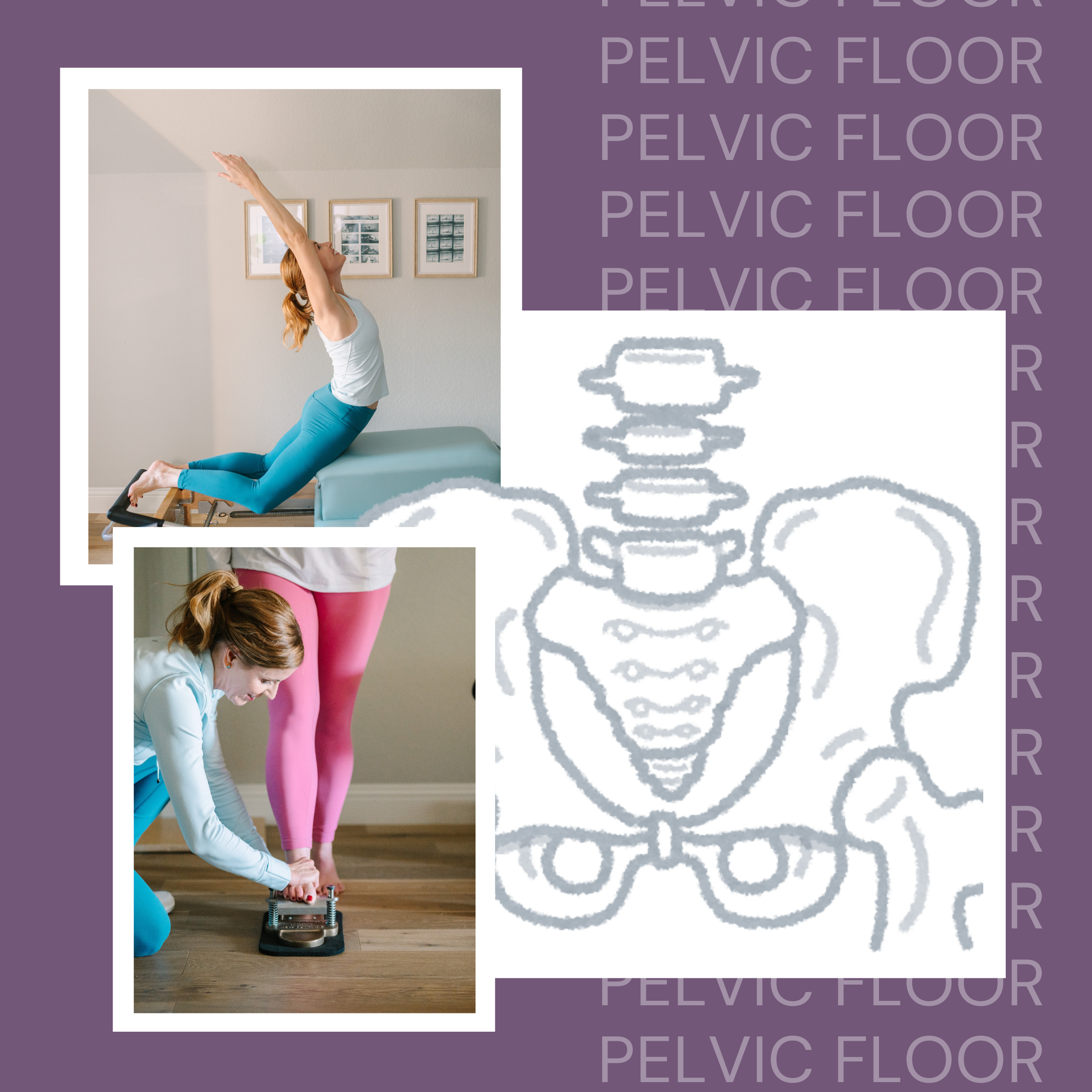The theme of exploration for the month of April in our studio has been ALL ABOUT the role of the pelvic floor in Pilates for serving our full bodied, internal health.
We even had a really exciting instructor workshop the other weekend here in the studio where we explored this concept comprehensively.
The clients have been diligently working on getting connected to the pelvic floor all month long in their sessions within the flow of the exercises and understanding how to make it a natural part of their center powerhouse activation. As a result, clients are finding more connection to their breath, enhancing their pelvic power and suspension that is translating and connecting them to the rest of the body, strengthening the deep abdominals, shedding hip flexor and other unwanted tensions in the body, and overall demonstrating more organized, controlled, efficient, fluid, full bodied movements. The strides they are making in their practice are incredible and breathtaking to watch!
From an anatomical standpoint in very simplistic terms, the pelvic floor is the basin of the three dimensional core. From a functional standpoint, it should act as a strong equal partner to the deep abdominals (Transversus Abdominals), as well as, through its connection to the Diaphragm (the top of our three dimensional core) assist in deeper breathing. In Pilates, we use our center to initiate every movement paired with the breath pattern. When the pelvic floor acts in conjunction with the deep abdominals, there are internal health benefits that reach WAY BEYOND just reproductive organ health that the pelvic floor is so commonly associated with.
The pelvic floor and deep abdominals work together as a continuous organic internal pump that assists lung function, enhances blood circulation and cellular oxygenation, drives the propulsion of the lymphatic system, massages the visceral organs of the pelvis and trunk, maintains nerve health, and decompresses the spine and hip joints. I think that is pretty IMPRESSIVE and certainly garners a level of respect for the pelvic floor, and the role it plays in our overall health.
We also have been looking at how the pelvic floor is connected to multiple other parts of the body through innervation and fascial connections. We have been especially exploring the role of the feet and their connection to the pelvic floor, and how stimulating the feet through specific Pilates foot exercises, as well as, the positioning and energetic connections of the feet to the apparatus in each exercise creates stronger connections up to our pelvic floor as part of our full center, which further helps the spine do what we are asking of it to do in each exercise-to flex, extend, and/or rotate, etc. Overall, we are able to get our full nervous system more engaged to be capable of larger, more complex expressions of movement in all the exercises on all the apparatus, for example, Swan on the Long Box and other advanced and super advanced exercises. In turn, our Pilates practice advances with more uniform development and capability, which further enhances our whole health.




